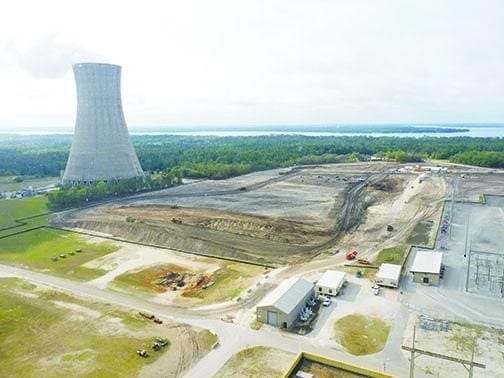Rural Electric Cooperatives Get Big Money to Improve Infrastructure
The post Rural Electric Cooperatives Get Big Money to Improve Infrastructure appeared first on POWER Magazine.

The U.S. Department of Agriculture (USDA) said it will provide loans and loan guarantees to rural electric cooperatives and utilities to build or improve infrastructure in 21 states. The funding was announced on June 22 and amounts to more than $1.6 billion, including nearly $386 million for investments in smart grid technology, which uses digital communications to detect and react to local changes in electricity usage.
Reliable and modern 21st century infrastructure, including electric infrastructure and smart grid technologies, is a cornerstone for prosperity in rural America," Secretary of Agriculture Sonny Perdue said in a statement. Under the leadership of President Trump, USDA is committed to being a strong partner to rural communities in building their futures."
The USDA said 9,138 miles of electric transmission and distribution line will be built or improved as a result of the funding. It expects the investment to benefit about a million rural residents and businesses.
New Power Plant in Florida Moves ForwardFlorida's Seminole Electric Cooperative, headquartered in Tampa, received the most federal money in this round of funding, taking $727 million to finance a new natural gas-fired combined cycle power plant and its associated transmission facilities. The other states that will receive investments are Alaska, Arizona, Arkansas, Colorado, Georgia-where Perdue served as governor from 2003 to 2011-Idaho, Illinois, Indiana, Kentucky, Louisiana, Michigan, Mississippi, New Mexico, North Dakota, Oklahoma, South Carolina, Tennessee, Texas, Washington, and Wisconsin.
In April, Seminole Electric provided an update on the new unit being built at its Palatka plant (Figure 1). Project Director Thomas Reed said logging and clearing at the site of the combined cycle facility was complete and construction office trailers had started to arrive. He said site excavation and roadwork started on March 3, with injection grout and soil improvement beginning in March as well.
 1. The construction site for Seminole Electric's new combined cycle power plant is shown here cleared for work. Courtesy: Seminole Electric Cooperative
1. The construction site for Seminole Electric's new combined cycle power plant is shown here cleared for work. Courtesy: Seminole Electric CooperativeReed noted that the project was on budget and on schedule at the time. It has a projected finish date in October 2022, with commercial service expected to begin in early 2023. When Seminole announced the project in August last year, it said the natural gas-fired plant would replace one of two coal-fired units in Palatka.
Electric Program Benefits Many Rural CustomersThe USDA says its Electric Program provides leadership and capital to maintain, expand, upgrade, and modernize America's vast rural electric infrastructure. Under the authority of the Rural Electrification Act of 1936, the Electric Program makes direct loans and loan guarantees, as well as grants and other energy project financing to electric utilities (wholesale and retail providers of electricity) that serve customers in rural areas.
In early March, another nearly $900 million in investments was announced at the National Rural Electric Cooperative Association's annual meeting and conference in New Orleans. That money went to co-ops in 16 states-Arkansas, California, Georgia, Indiana, Kentucky, Minnesota, Nebraska, Nevada, North Carolina, North Dakota, Ohio, Oklahoma, Oregon, South Carolina, South Dakota, and Virginia. It was designated to help build and improve 2,743 miles of line and was expected to benefit about 1.1 million rural residents and businesses. However, that round of funding only included $17 million for investments in smart grid technology.
In 2019, the USDA said it invested a total of $5.8 billion to upgrade or build electric and smart grid infrastructure, which it said will benefit 7.7 million rural consumers across 32 states.
-Aaron Larson is POWER's executive editor (@AaronL_Power, @POWERmagazine).
The post Rural Electric Cooperatives Get Big Money to Improve Infrastructure appeared first on POWER Magazine.